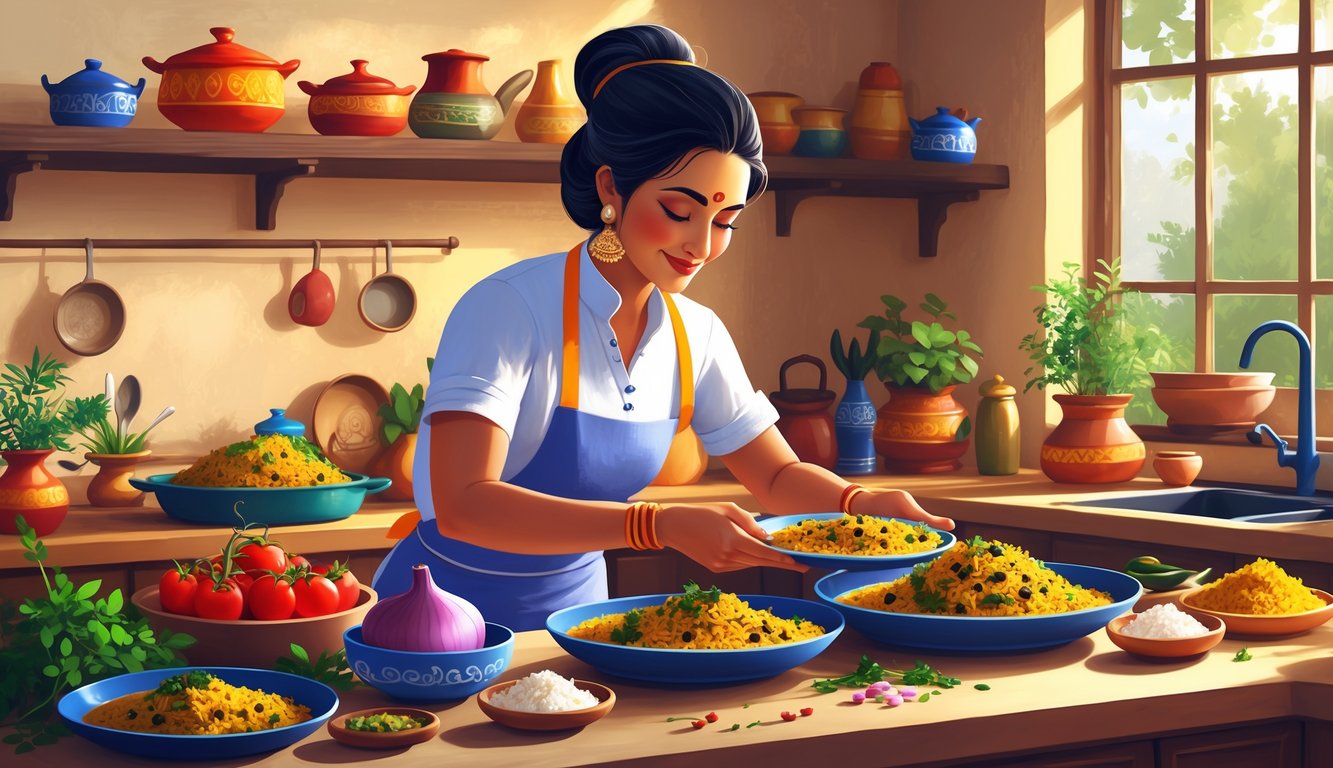
Classic Indian Home Dishes To Master
Last week, I forgot coriander—again. Still, my chana masala beat every “authentic” restaurant in town. It’s honestly wild how home cooks improvise with half the ingredients and still win. These staples? They save money, give you control, and, let’s be real, make leftovers worth eating.
Comfort Food Curries
People act like butter chicken is some mystical rite, but honestly, if you’ve got ghee and yogurt—and can remember to marinate—there’s nothing stopping you from making it on a regular old stovetop. I don’t even pretend to follow the “classic” steps; sometimes I dump in coconut milk if I forgot cream, and, whatever, it still works. That thick, clingy tomato sauce is what matters. Naan just becomes the delivery system.
Chicken curry, chicken korma—yeah, I blitz onions, toss in bone-in meat (boneless is just sad, don’t ask me why), and never measure spices. Half the time, I’m guessing garam masala amounts, and it’s fine. Once, some Delhi chef ranted at me about how paneer gets rubbery if you stir it too much in saag paneer. Now I just fold it in at the end because, why risk it? Lamb rogan josh at home? Takes forever, way less greasy, and if you skip the Kashmiri chili, you’re only cheating yourself.
Street Food Favorites
Pav bhaji—everyone’s obsessed with the street tawa, but I just mash my veggies, blitz half of it, and call it a day. Potato masher, food processor, done. Anyone else think margarine is a crime? Real butter or nothing, and honestly, the smell takes over the whole apartment. Sorry, neighbors.
Bhaji gets no love because samosas hog the spotlight, but who has time for pastry on a Tuesday? I drown those potato fritters in twice the green chutney you’d get at a stall. Aloo gobi? Leave the lid off, let the cauliflower crisp—my uncle claims it’s the only way it tastes “right.” Restaurant-style aloo gobi? Maybe, if you don’t mind yellow stains everywhere. I’ve given up scrubbing.
Beloved Rice Specialties
Biryani is a stress test. Every region thinks their way is the only way, and I just layer whatever I have—sometimes chicken, sometimes lamb, sometimes leftover saag. Not proud, just hungry. I never peek while it steams, but the urge is real. Cloves, cardamom, bay leaf—if you skip these, it’s just rice. Don’t even try the shortcut mixes; they taste like disappointment.
Homemade chicken biryani? No weird colors, no oil slick. My friend burns the onions every time, so now I fry a batch ahead and scatter them on top. Chana masala and rice is peak cheap-eats—vegan, filling, and, yeah, every nutritionist I know says it’s good for you. Restaurant rice “fluffier”? Go check their steam trays and rethink your life. Taste of Home claims biryani, butter chicken, and chana masala top the charts, but cooking at home wins for leftovers, cost, and not being judged for eating straight from the pot.
Vegetarian and Vegan Indian Home Recipes
Too many people act like Indian takeout is the only way, but honestly, you can make better stuff with way less oil and way more flavor at home. “Secret” tricks? There aren’t any. Most of it is just not cutting corners, especially if you’re cooking plant-based. Weirdly, skipping the restaurant hacks makes home food taste better by accident.
Creative Plant-Based Mains
My kitchen’s always a disaster, but somehow, saag paneer (spinach puree, cubes of paneer, a chaotic spice blend) comes together faster than delivery. I swap in tofu sometimes, but twice now I’ve pressed tofu and then realized I forgot lemon. Guess it’s “fusion.” Not chasing authenticity points—leave that for YouTube.
Aloo gobi should be a default by now. Cauliflower, potato, turmeric, amchur—done. When I run out of cilantro, I just throw in frozen peas or whatever greens are dying in the fridge. Sometimes it’s better that way. I scroll Dassana’s Veg Recipes and realize I’ve already failed and loved most of these.
Bhindi masala? Half my friends won’t touch okra. I dry-fry it with garam masala, chili, and tomatoes, and if it gets slimy, I pretend it didn’t. Nobody warned me how much amchur changes the whole thing—seriously, why isn’t that on the label?
Side Dishes and Refreshing Salads
Chutneys get ignored, but I’d rather skip a main than serve dinner without mint chutney. My blender hates me, and I never get the mint-to-cilantro ratio right. Usually, I just throw in handfuls and hope for the best. If it’s green, it’s fine. Family eats it with everything, so who’s counting?
Raita is idiot-proof unless you’re lactose-intolerant (coconut yogurt is my fallback). Yogurt, cucumber, cumin, sometimes beetroot if I want it to look weird and festive. Side salads? Onion, lemon, black salt—most people are impressed. The Plant-Based School’s Indian vegetarian lineup says you need more, but do you really? Midnight inspiration only leads to mess.
And watermelon with chaat masala? Should be everywhere. Except in tea. That’s just wrong.
Vegan Alternatives for Classics
Anyone who says vegan Indian food is “limiting” has never tried to swap ghee for olive oil at midnight. I use coconut cream, oat milk, tofu, vegan butter—whatever’s in the fridge. If it curdles, it’s “rustic.” Most recipes work fine vegan: chana masala, dal, dosas. No big deal.
Saag paneer becomes saag tofu, and purists lose their minds. I press tofu, fry it quick, and only ruin it if I get distracted by my phone. Rainbow Plant Life’s vegan Indian round-up has more substitutions than I have fridge space. Even my nutritionist cousin admits some are actually healthy.
“Restaurant flavor” is a joke. Most places just dump in sugar and cream. At home, it’s all about the spices, ginger, and stubbornness. If I blend tamarind paste and cashews into a curry, nobody asks what’s missing—they just eat.



